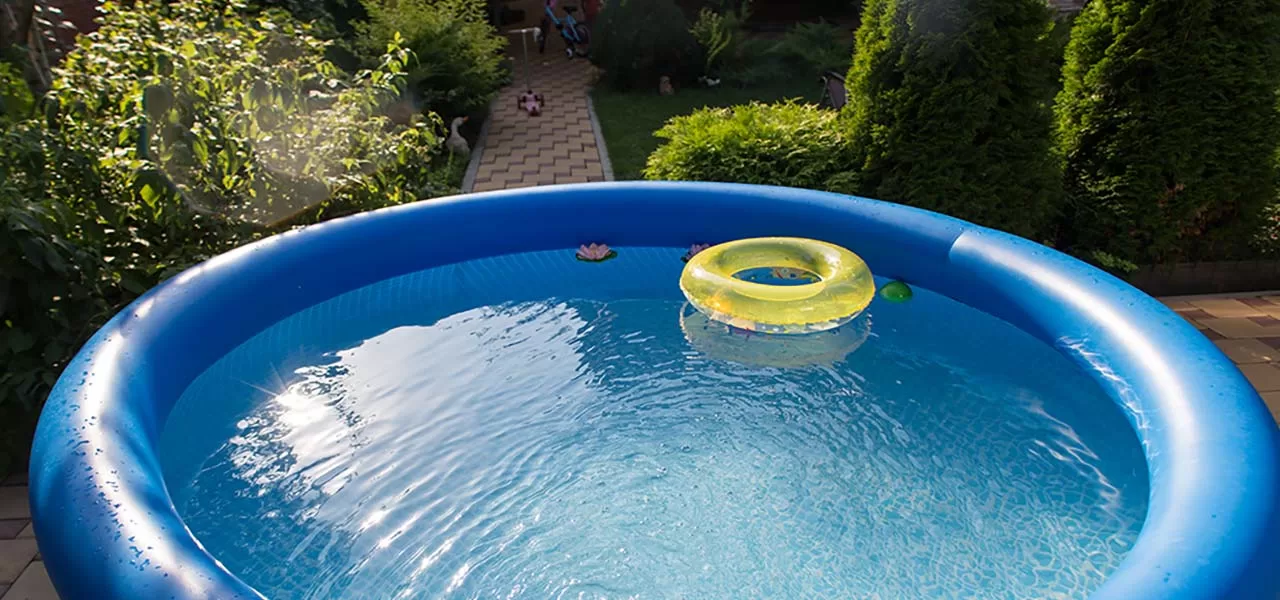FREE Standard Shipping On All Orders $100 or More!*

How to Drain & Store an Intex Pool
If the thought of dismantling your pool seems like an awful task, relax and review our six-step method for draining and storing your Intex pool for the winter.

1. Check Water Chemistry
Checking the water chemistry before draining a pool is essential to prevent potential environmental harm. The chemical balance of pool water is carefully maintained to ensure the safety of the environment into which the drained water is released. Unchecked, imbalanced water may contain high levels of chlorine, pH, or other chemicals that can be harmful to plants, aquatic life, and soil. By assessing the water chemistry beforehand, pool owners can take corrective measures to neutralize any imbalances and discharge water that is environmentally friendly.
2. Locate the Drain Valve
The drain valve is located on the outside of the pool. Run a garden hose out, with the female end near the drain valve. Connect the other end to a sprinkler, and water your lawn or garden (if pH is good and chlorine low). Remove the cap.
3. Drain the Pool

Connect the female end of a garden hose to the drain connector and you can now drain the pool completely. If draining to an open area, you may want to move the hose during draining to avoid erosion or oversaturation.
On some Intex pools, you may need to screw a hose adapter onto the female garden hose end and then thread the hose adapter into the drain valve. This will prevent the water from coming out immediately when you remove the drain cap.
Because it's only gravity draining, you can't drain it too far uphill. It will take a few hours for small Intex pools and more than 12 hours for larger pools. You should begin draining an Intex pool the night before you plan to dry, fold, and store it.
4. Dry the Pool
After complete draining, your pool will need to dry completely before folding. For Frame Set™ pools, this may be easier if the pool is left standing to allow it to air dry. Otherwise, you may find a wet/dry vacuum useful or use some towels to gently wipe your Intex pool dry.
Dry the pool well on the inside and on the outside walls so the vinyl won't stick together when folded, or grow mildew. As a final step, using Talc or DE powder can help absorb trace moisture. Screw your pool drain cap back onto the drain valve so it won't get misplaced.
5. Fold Your Intex Pool for Storage
Fold the wall part of the material in on all sides, then with two people, pull one side of the pool over to meet the other side. From here, keep folding in half until you have a long strip, about 3-4 feet wide. Roll or fold this up into a manageable size.

6. Store Your Pool at Room Temperature
If possible, store at room temperature, and keep it away from any nesting mice, birds, or other critters that may chew holes through the vinyl. For winter storage, consider placing a spacious, tidy, and brand-new trash can in the basement or garage.
You'll also want to drain the pump and filter and store them indoors or out of the elements.
How Do I Drain the Last 100 Gallons From My Intex Pool?
You can use a wet/dry vacuum, or a pail and sponge, but most people move the water to one side and then with two or three sets of hands spill the water over the edge. Before you do this, however, deflate the top ring on Easy Set™ or disassemble the frame pieces for Frame Set™ pools.
The easiest way to move the water is to have two people grab the floor of the pool on one side and "walk the water" to the other side of the pool. Allow the water to spill out slowly. If the pool floor has dirt or debris in it, use a pool brush or a soft push broom to sweep the bottom of any film or remaining dirt before draining.
What if I Can't Find the Drain Plug?
Sometimes the caps are buried just under the edge of the pool, but if you don't find it, here are some other ways you can drain the pool.
Gravity Siphon

Push a garden hose or vacuum hose straight into the pool water so that the entire hose fills up with water. After it's full, secure one end of the hose to the pool edge with tape or string, with 3-5 feet of the hose still sticking down into the pool water, almost touching the bottom.
Cap the other end of the hose with your thumb and quickly pull all of the hose over the wall (except for the 3-5 foot section). Keeping the other end capped with your thumb and low to the ground, pull out the hose to a lower area for draining and release your thumb with the hose on the ground.
As long as the pool end is higher than the discharge end, your siphon should start immediately. This method of siphon draining your pool can also be done with a pool vacuum hose.
Submersible Pump
If you have a small sump pump, or a pool cover pump, these can be used to drain the Intex pool. Connect a garden hose, plug it in, and carefully place the pump in the bottom of the pool, near the edge.
You can rent a small pump at a rental shop, or we have a nice variety of cover pumps.
Skimmer or Return Hoses
You may have already realized that you could remove the hose from the pool filter and drain water right next to the pool. This will work, however, only down to the level of the return.

It's always best to drain or pump out an Intex pool slowly. With the Easy Set™ pools, you may be tempted to deflate the top ring and just sort of roll the water out. This can be dangerous, not just to nearby plants or mulch beds, but to the pool, which can rip or develop holes during the process.
That's our super simple six-step system for draining your Intex Frame-Set™ or Easy-Set™ pool. Take the time to do it right and you'll enjoy many more years of fun with your Intex Pool.
TIP: If you decide to dispose of your Intex pool (after all, they don't last forever), please try to recycle the vinyl. Most landfills will accept your vinyl pool for recycling.
Enjoy your winter, and we'll see you next year!